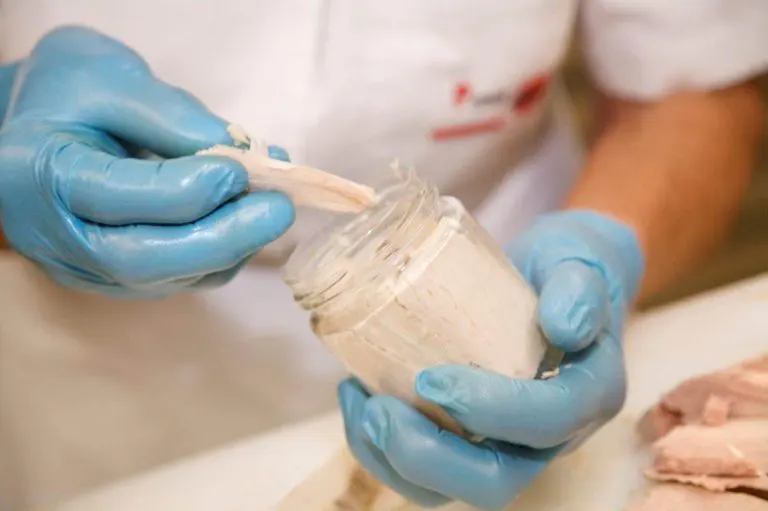
The most select of our sea… Northern bonito.
Where, when and how to fish?
Bonito is caught during the summer season using hooks, which means that the animal does not suffer in the nets and thus improves the quality of its meat.
Fishing is carried out in the Cantabrian Sea under FAO27 designation (Bay of Biscay)
The catch is carried out by the Cantabrian “coastal” fleet.
Live bait is used with a rod and hook in the traditional way, one by one, thus being able to select the best quality.
It is also possible to fish using purse seine techniques.
This way, the seabed is not dragged and other species are not caught by trawling.
Sustainability is once again our priority in this coastal campaign.
How is this preserve prepared?
In this process, the preparation of the preserve is one of the most complex.
We are experts, as the speed of this process is very important as boiling and packaging must be done in a short space of time to preserve its freshness…expert hands and olive oil do the rest to make it the best of the best.
What can we say about the quality of its meat? Is it suitable for those on a diet?
Bonito is a blue fish and its meat is high in fat, but its fat is the best, as it has a high content of Omega 3 , also vitamin B2 (rivoflavin) B3 (niacin) B9 (folate) and B12 (cyanocobalamin). But not only this, it is also worth highlighting that this “beauty” is loaded with fat-soluble vitamins such as vitamin A and vitamin D… Only the sun and blue fish provide us with this vitamin that provides us with calcium in the intestine and the mineral is deposited in the bones, necessary to avoid decalcification processes.
Finally, potassium, phosphorus, magnesium, iodine, iron and calcium are added to this unique fish.
Already considered one of the “ superfoods ”, if you are on a diet or are an athlete, don’t forget to include it in your menu as a priority.
But tuna and bonito, aren’t they the same thing?
Let’s see the differences.
Although it is in the group of “tuna” (THUNNUS) the differences are considerable.
Among the three common tunas are:
It is also called white tuna when caught in the Cantabrian Sea.
It has an exquisite flavor and its meat is softer than the other two tunas.
Its slices are highly appreciated in haute cuisine, and we must not forget its versatility in the entire Mediterranean diet.
The most precious gift of this fish is the belly , we already wrote a “special” about this wonder.
Soft, tasty and exquisite, the ventresca is a gift from the sea.
Overall, northern bonito is a first-class fish and we have been preparing it in an artisanal way and with bonito fishing for three generations now.
Don’t miss out on anything. If you would like to visit our factory to see this campaign, if you want us to send you samples or if you simply want to find out about our range of products, don’t hesitate to write to us or call us.